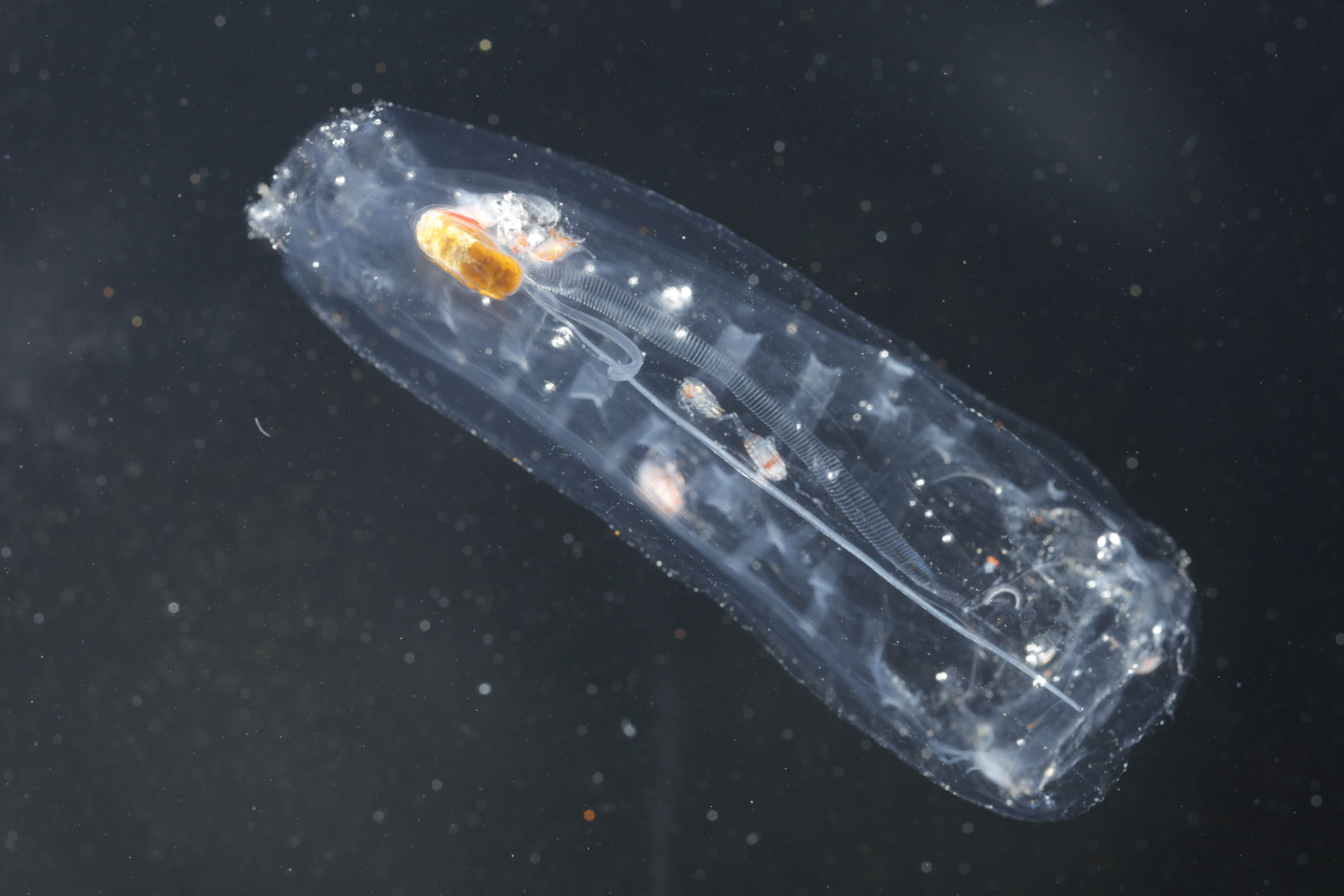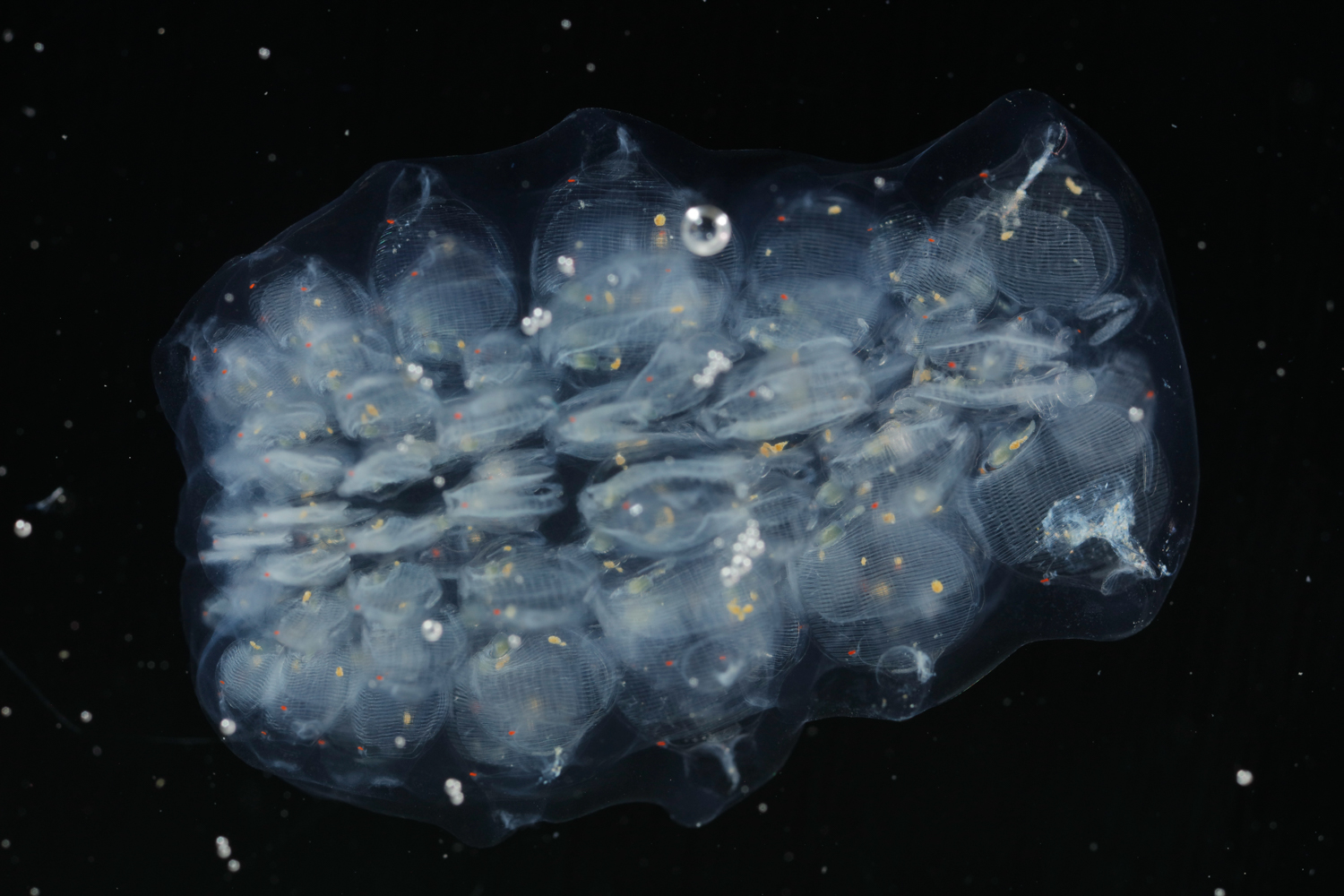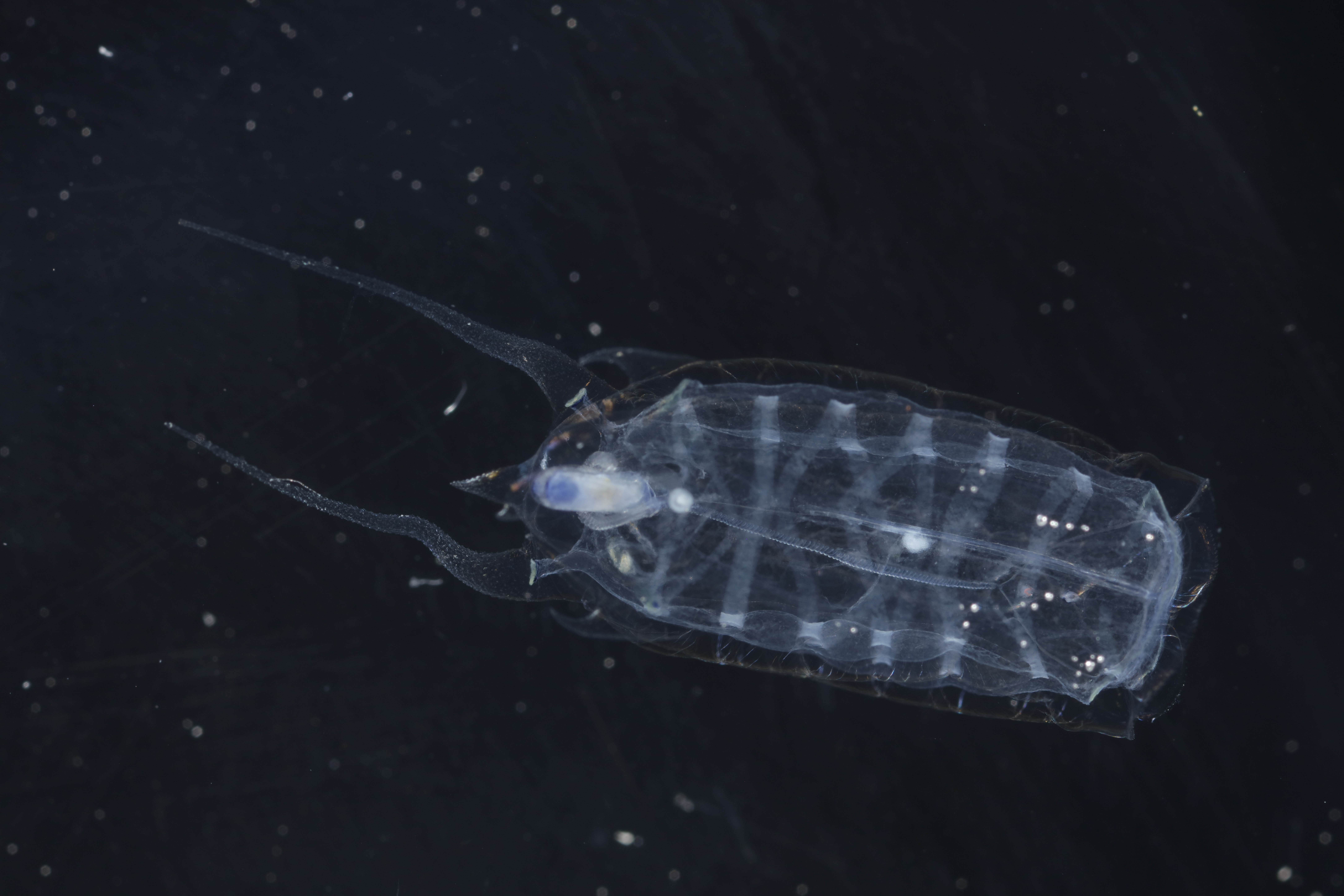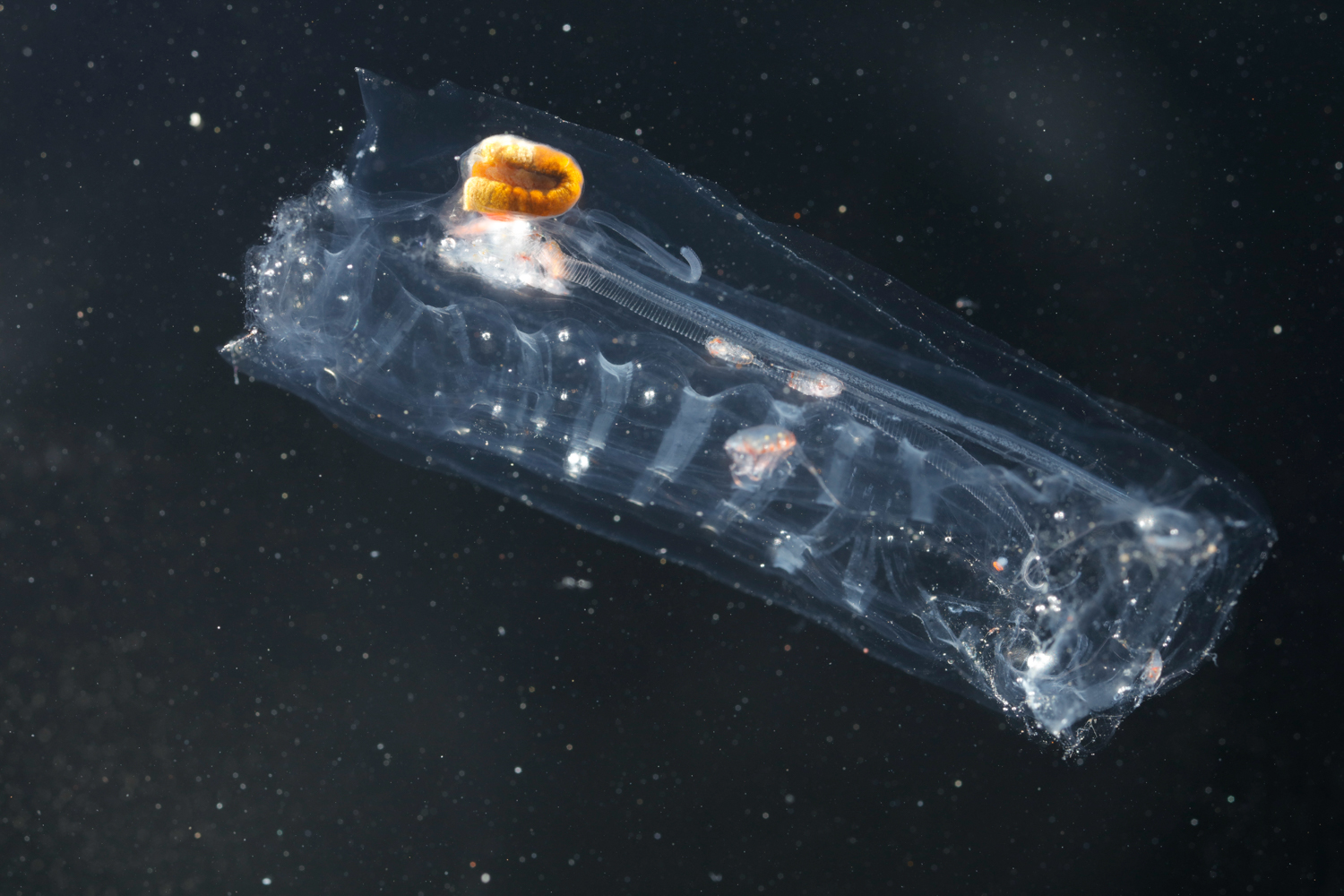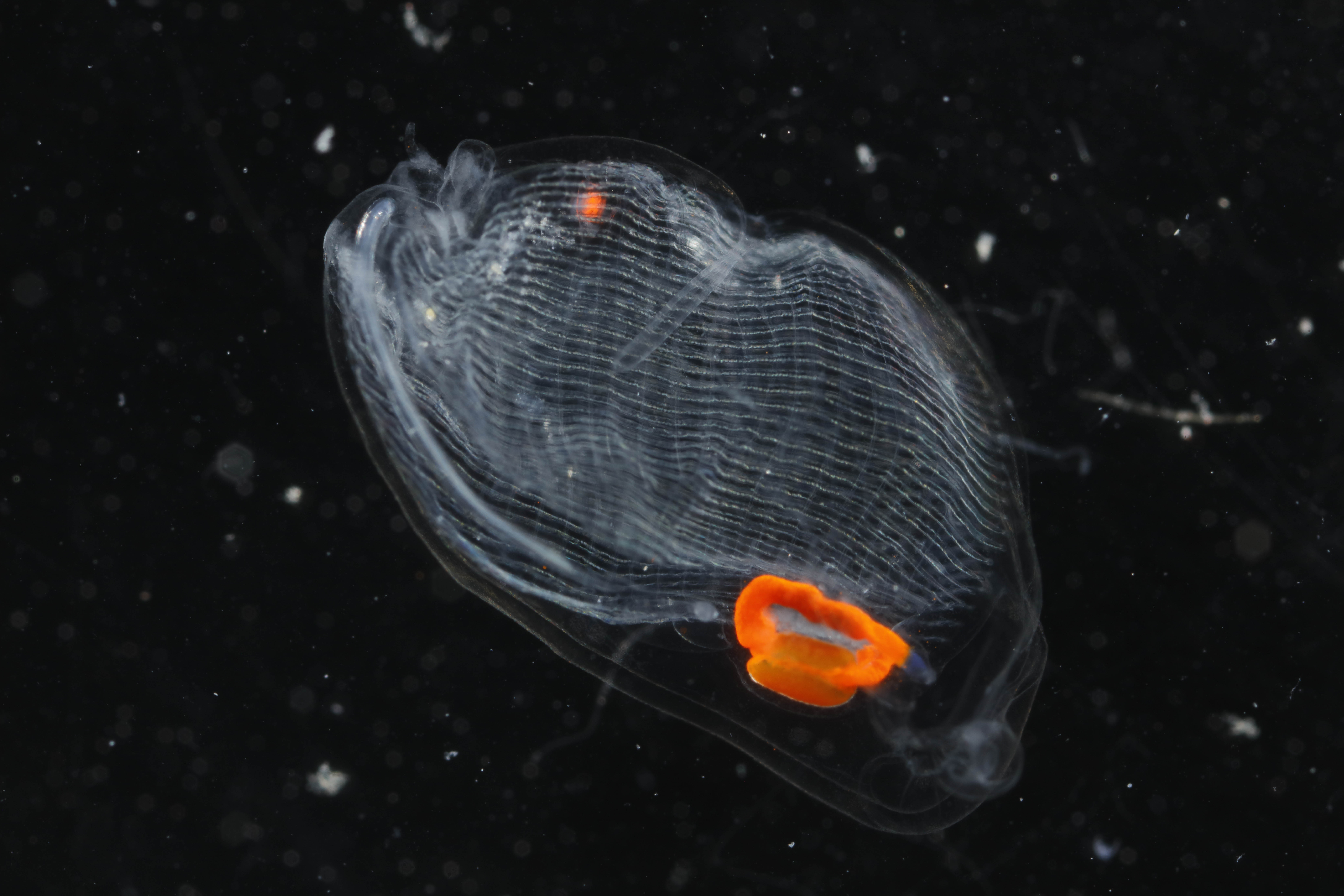One of the aims of the MSM126 expedition, embarked on its journey of discovery, is to shed light on gelatinous zooplankton diversity in Madeira water. In this regard, one particular focus lies on the enigmatic group of the thaliaceans (open-water tunicates in English and Manteltiere in German), often referred to as the enigmatic drifters of the ocean. Contrary to popular belief, these soft-bodied organisms are not closer relatives to jellyfish but rather share an evolutionary connection with fish. Despite this biological distinction, their semi-translucent appearance makes them often associated with cnidarians and comb jellies. Thaliaceans inhabit the vast expanses of the ocean and are exclusively oceanic dwellers, although sporadic sightings near the coast are not unheard of. Interestingly, they are rarely found in highly productive waters.
This taxonomic class consists of small barrel-shaped doliolids – majestic chain-forming salps stretching up to 30 m, and the mesmerising fire bodies known as pyrosomes. All thaliaceans share a remarkable trait – a cellulose-like macromolecule called tunicin, that builds up their hard-to-digest tunics. Unlike their coastal jellyfish counterparts that have bottom-living polyps, thaliaceans spend their entire life in the water column leading to a holoplanktonic existence. Because of the bioluminescence of many species in this group, they have been known by seagoing explorers and fishermen for centuries.
Thaliaceans are known as the “vacuum cleaners of the sea” and sustain themselves by feeding on tiny particles ranging from bacteria to microzooplankton. Despite their tiny individual size, they form colonies of dozens to thousands of zooids, creating captivating spectacles that never fail to attract attention, especially from curious divers.
While pyrosomes primarily occur in tropical to temperate latitudes, doliolids and salps can be found in polar regions, showcasing the remarkable adaptability of these gelatinous wonders. Their ability to rapidly reproduce asexually allows them to form blooms within days, swiftly responding to shifts in environmental conditions, such as the occurrence of a phytoplankton bloom. Thaliaceans are notoriously challenging to study and difficult to keep alive in captivity and are therefore less well-understood compared to jellyfish and comb jellies. Nonetheless, their contribution to the carbon export from the ocean’s surface to the deep sea via fast-sinking faecal pellets underscores their critical role in marine ecosystems.
Greetings from on board RV MARIA S. MERIAN,
Florian, Sonia and Jamileh
